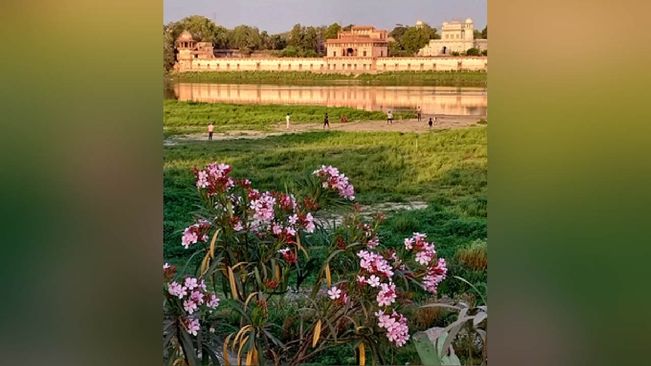This disruption has raised alarm about an impending water crisis in the city this summer. Fortunately, authorities have decided to postpone the total shutdown of the supply for technical reasons until after the festivals of Eid and Ramnavmi.
Despite the reprieve, fundamental issues persist ahead of Lok Sabha polls, particularly regarding the state of the Yamuna. As temperatures soar, Agra's two million residents are gearing up for the struggle for water, as it happens each summer. The demand rises and the supply fails to meet the increasing requirement, primarily due to the neglect of Yamuna. The pipeline from Palda, which supplies approximately 140 cusecs of water, falls short of meeting the demand, putting immense pressure on the city's waterworks during summer.
President of Agra Civil Society, Anil Sharma said: “Apart from the sorry state of river Yamuna, one reason responsible for the current crisis is the disappearance of water bodies. A quarter century ago, there were more than 500 community ponds in the district, but now only around a hundred are left. The rest have been gobbled up by land sharks, but the state government has not shown any concern.”
As the mercury soars, long queues at hand pumps and residents waiting for municipal water tankers become common. Frustration mounts among locals, who criticise elected representatives for their failure to address the persistent water shortages.
It is not even mid-April and the temperature is currently hovering around 40 degrees Celsius. Parents of school-going children have urged the district administration to change school timings and opt for an early summer vacation.
Activists of River Connect Campaign allege that despite promises made by political leaders from Prime Minister Narendra Modi to UP Chief Minister Yogi Adityanath, the barrage on Yamuna, downstream of Taj Mahal, remains a dream.
“They could have spent time and money to clean up the river through dredging and desilting to increase the water-holding capacity of the Yamuna during the monsoon months,” said Devashish Bhattacharya, a river activist.
Despite improved water quality and quantity till March, rising temperatures have once again left the river dry and polluted. There is hardly any water left for Agra because all of it is being used by the cities upstream. The river's minimum flow has also been impacted. The Chief Minister of Uttar Pradesh has been petitioned by activists to use MGNREGA funds to actively clean up community ponds and waterways.
Meanwhile, a new initiative of the state government will help store millions of cubic metres of Monsoon rainwater, which is currently getting wasted every year. The state Irrigation Department has taken the initiative to build a dam on river Utangan.
Utangan flows from the Aravalli range in neighbouring Rajasthan's Karauli district. It meanders its way, connecting several tehsils of Agra district before joining Yamuna in the Bah tehsil. Utangan is basically a monsoon-fed seasonal stream, but the backflow from Yamuna during the rainy season floods the low-lying areas.
"This is a huge quantity, some 600 crore cubic litres is enough to take care of the needs of Agra's vast hinterland if a dam was built in Rihavali village," according to river activist Rajiv Saxena, who has been spearheading a campaign to save water bodies in the region.
Anil Sharma added: “For the past two years, we have been meeting officials, politicians, and everyone who could understand the gravity of water shortage in the area and its solution. Finally, our District Panchayat Chairperson Manju Bhadoria took the initiative and interacted with UP Chief Minister Yogi Adityanath on December 25. The process is set in motion. The survey by the Irrigation Department would be completed within a week, then a DPR would be prepared. We are hopeful the work will begin soon, perhaps before Monsoon."
With the Yamuna in dire straits due to pollution and water shortage, there is a need for rejuvenating half a dozen seasonal tributaries of the river in Agra. If the smaller rivers are cleaned, dredged, and desilted, they could hold back a huge quantity of rainwater, along with the backflow from Yamuna during the monsoon season.
(IANS)















